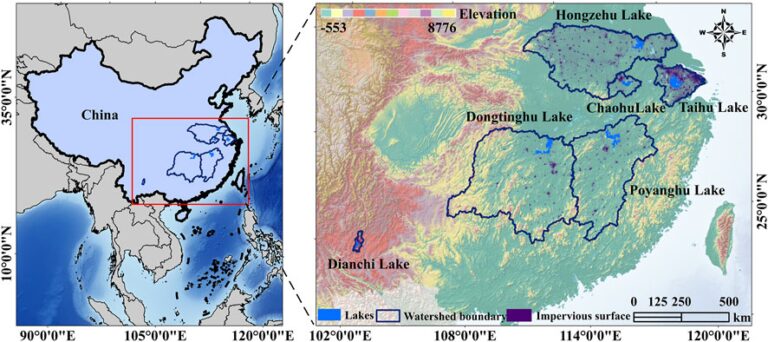The article discusses the significant impact of urbanization and impervious surfaces (IS) on lake surface water temperature (LSWT) across several lakes in China. It emphasizes that LSWT is a critical factor for lake ecosystems and has shown a warming trend globally. The study focuses on six rapidly urbanizing lakes—Dianchi Lake (DCL), Poyanghu Lake (PYHL), Chaohu Lake (CHL), Dongtinghu Lake (DTHL), Hongzehu Lake (HZHL), and Taihu Lake (THL)—and employs a spatial influence equation (G) to quantify the impact of IS on LSWT, considering the distance between IS and the lakes, and lake area.
Key findings include:
1. In the years 2001-2018, IS has significantly expanded, with variations in growth rates among the lakes.
2. LSWT also exhibited a warming trend, but this was not consistently aligned with IS expansion—indicating that other factors like lake size and distance from IS also play crucial roles.
3. The correlation between LSWT and the G value shows stronger results for smaller watershed areas compared to larger ones.
4. The growth rates of ISA and LSWT were often inconsistent, highlighting the need to consider spatial distribution and distance effects when analyzing the impact of urbanization.
The study concludes that urban expansion significantly affects LSWT, necessitating urban planning and management strategies that mitigate this impact for ecological protection. Overall, the findings provide valuable insights for managing urban development in watershed areas to preserve aquatic ecosystems.


